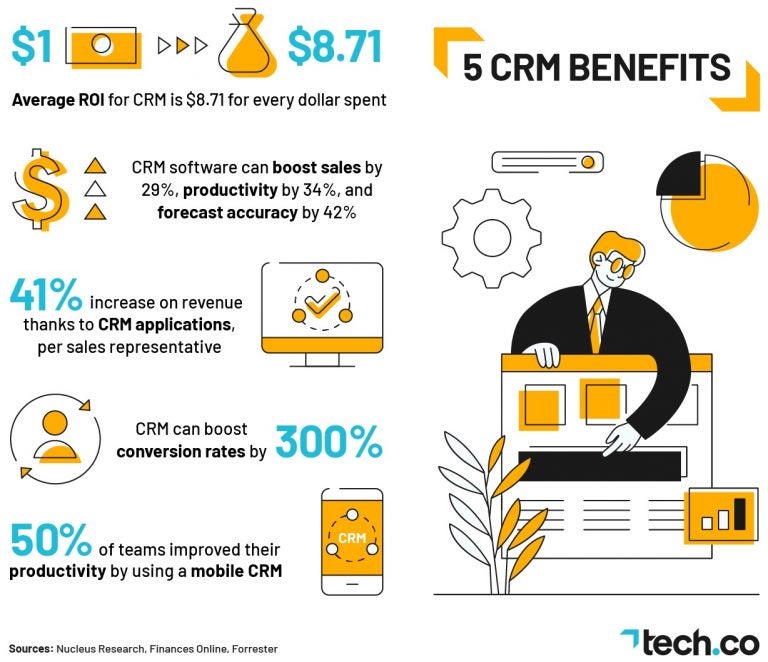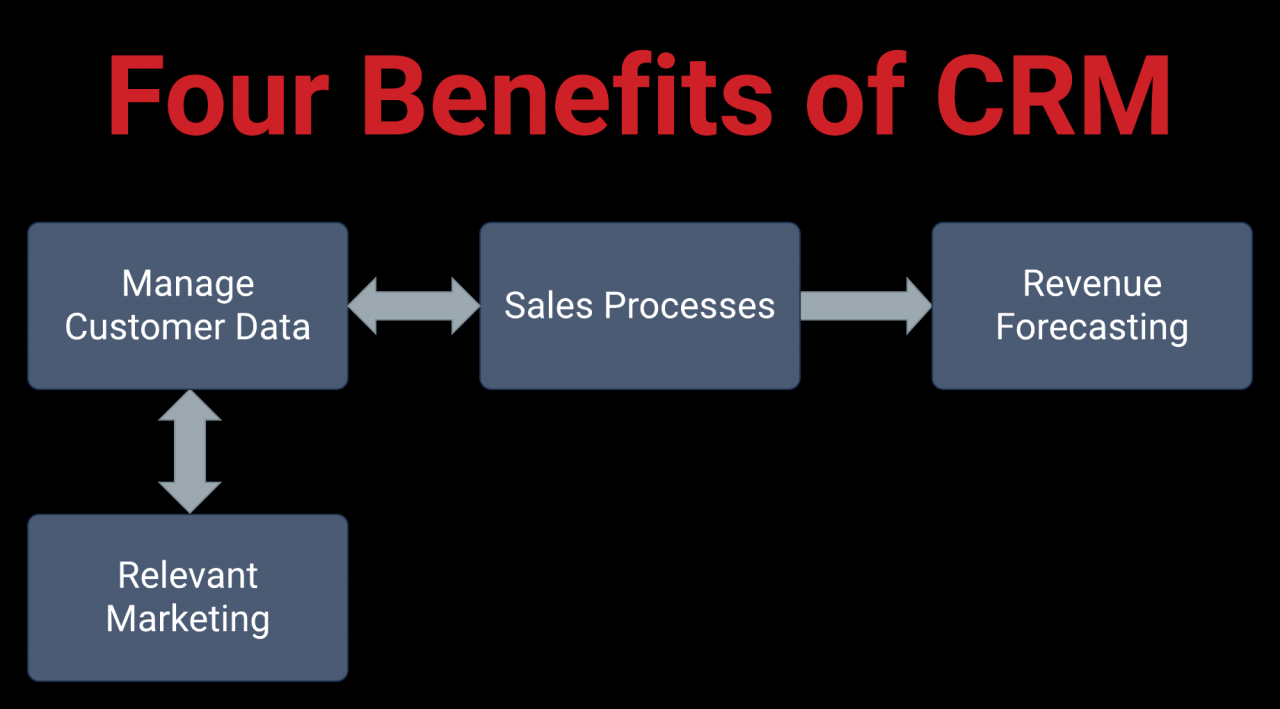Measuring the ROI of a CRM system and demonstrating its value to stakeholders is crucial for securing buy-in and continued investment. This isn’t just about crunching numbers; it’s about building a compelling narrative that showcases how your CRM is directly impacting the bottom line and improving key business processes. We’ll explore practical strategies to effectively measure your CRM’s success, translating complex data into easily digestible insights for everyone from executives to frontline sales teams.
Get ready to transform your CRM data into a powerful tool for demonstrating its worth!
This guide will walk you through a step-by-step process, from defining relevant KPIs and collecting accurate data to calculating ROI and presenting compelling visualizations to stakeholders. We’ll tackle common challenges, like attribution issues and the quantification of intangible benefits, and provide practical solutions to ensure you’re accurately measuring and showcasing the true value of your CRM investment.
Demonstrating Value to Stakeholders

Data doesn’t lie, but it can be easily misinterpreted. To truly showcase the return on investment (ROI) of your CRM system, you need compelling visuals and a narrative that resonates with each stakeholder group. This section will explore how to effectively present your findings and craft persuasive arguments that highlight the tangible benefits of your CRM implementation.
Visualizing CRM ROI, Measuring the ROI of a CRM system and demonstrating its value to stakeholders
A well-designed presentation slide can communicate complex data in a digestible format. Consider a slide showcasing a combined bar and line graph. The bar graph would represent key performance indicators (KPIs) before and after CRM implementation – for instance, lead conversion rates, sales revenue, customer satisfaction scores (CSAT), or average handle time (AHT). The line graph, overlaid on the bars, would illustrate the trend of these KPIs over time, demonstrating the positive impact of the CRM system.
Use vibrant, contrasting colors to highlight the differences between pre- and post-implementation data. The title of the slide should be clear and concise, for example, “CRM ROI: A Measurable Impact.” A legend clearly defining each bar and line should be included. Adding percentage changes alongside each bar would further emphasize the improvements. Finally, a brief, impactful caption summarizing the overall ROI should complete the visual.
For example, “Increased Sales Revenue by 25% and Improved Customer Satisfaction by 15%.”
Compelling Narratives for Different Stakeholders
Tailoring your message is crucial. Executives need concise, high-level summaries focused on financial returns. Sales teams require data demonstrating improved lead management and increased sales. Customer service representatives need to see how the CRM streamlines their workflows and improves customer experience.For executives, focus on the bottom line. A narrative might emphasize: “Our CRM investment has yielded a 30% increase in sales efficiency, translating to a $500,000 increase in annual revenue and a 15% ROI within the first year.
This surpasses our projected targets and demonstrates a strong return on investment.”For sales teams, highlight improved productivity and lead conversion. “The CRM has centralized our lead information, eliminating duplicate efforts and allowing us to prioritize high-potential leads. Our average lead conversion rate has improved by 18%, directly impacting our individual and team sales targets.”For customer service representatives, focus on efficiency and improved customer interactions.
“The CRM’s integrated knowledge base and streamlined ticketing system have reduced our average handle time by 15%, allowing us to assist more customers efficiently and improve overall customer satisfaction.”
Executive Summary: CRM ROI
This executive summary presents the key findings of our CRM ROI analysis. Our investment in [CRM system name] has demonstrably improved key business metrics. We observed a [Percentage]% increase in sales revenue, a [Percentage]% improvement in lead conversion rates, and a [Percentage]% increase in customer satisfaction scores. The streamlined workflows have also led to a [Percentage]% reduction in average handle time for customer service inquiries.
These improvements translate to a projected ROI of [Percentage]% within [Timeframe], exceeding our initial projections. We recommend continued investment in CRM training and ongoing system optimization to maximize its long-term benefits. A detailed report with supporting data is available upon request.
Ongoing Monitoring and Optimization: Measuring The ROI Of A CRM System And Demonstrating Its Value To Stakeholders

Implementing a CRM is just the first step; ongoing monitoring and optimization are crucial for maximizing its return on investment. A static system won’t adapt to evolving business needs or reflect changing market conditions, ultimately hindering its effectiveness and failing to deliver the promised value. Consistent monitoring allows for proactive adjustments, ensuring the CRM remains a powerful tool for growth.Regularly tracking key performance indicators (KPIs) and analyzing the data they provide allows for a data-driven approach to refining CRM strategies.
This iterative process ensures the system continues to support business goals and provides a clear picture of its contribution to the bottom line. Ignoring this crucial step can lead to underutilization of the system and a significant loss of potential ROI.
KPI Adjustment and Strategic Refinement
Performance data should be the compass guiding CRM strategy. If sales conversion rates from leads generated through the CRM are consistently lower than expected, for example, it’s time to investigate. This might involve reviewing the lead qualification process within the CRM, adjusting marketing automation workflows to target more qualified leads, or even retraining the sales team on effective CRM usage.
Similarly, if customer satisfaction scores are declining, analyzing customer interaction data within the CRM can pinpoint areas needing improvement, such as response times or personalized communication strategies. Adjusting KPIs and strategies based on data ensures the CRM is not only functional but also effective in achieving business objectives.
Regular Review and Adjustment Schedule
Establishing a structured review schedule is vital for continuous improvement. A suggested schedule could include:
- Weekly Check-ins: Quick reviews of daily performance data to identify immediate issues or trends.
- Monthly Performance Reviews: More in-depth analysis of key metrics, focusing on progress towards goals and identifying areas needing attention.
- Quarterly Strategic Reviews: Broader evaluation of the CRM’s overall contribution to business objectives, including adjustments to KPIs and strategies based on long-term trends and market changes.
- Annual Comprehensive Review: A complete assessment of the CRM’s effectiveness, exploring potential system upgrades or changes to address evolving needs.
This tiered approach ensures continuous monitoring and allows for both reactive problem-solving and proactive strategic adjustments. For instance, a weekly check-in might reveal a sudden drop in email open rates, prompting an immediate investigation into email deliverability or content strategy. A quarterly review might show that a particular sales campaign generated a high volume of leads but a low conversion rate, leading to a refinement of the sales process within the CRM.